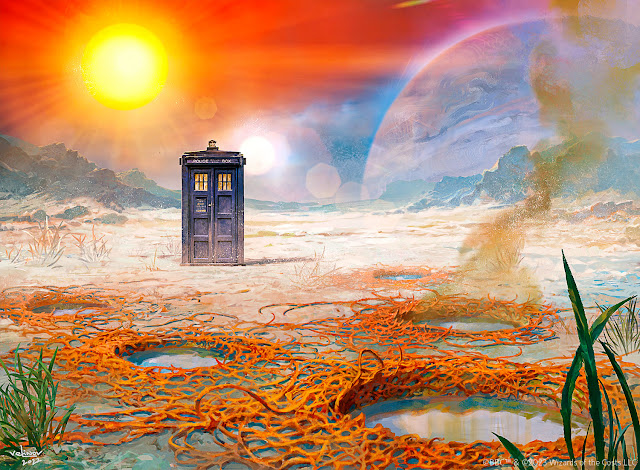The Seeds of Doom [TV/1976.1.31 ~ 3.6]
★★★★★
You'll never look at rustling plants the same way ever again.
The Seeds of Doom has practically everything you'd want in a Doctor Who serial: a commanding Doctor performance (Tom Baker is practically spitting acid every few seconds here), an equally brilliant companion performance (when is Elisabeth Sladen not remarkable in her role?), a captivating villain/monster (both the Krynoids and Harrison Chase are powerful antagonists, one representing an uncompromising alien force intent on survival through germination while the other is human hubris, greed and foolishness) and lightning-in-a-bottle direction from someone who totally understands what the script requires. Douglas Camfield is one of the classic series' championing directors, a man who always knows what a story requires for it to reach its full potential, and it's no hyperbole to say that The Seeds of Doom would not have reached the heights it reached without his input. Scenes with the Krynoids are so energetic, so terrifying in their nature that you almost forget in some moments that you're watching a family programme and mistake this for some forbidden midnight monsterfest... so naturally, it's glorious.
So whenever someone talks nonsense about how the classic series never focused too much on direction, hand them this serial. The six episodes fly by because it has a laser sharp focus, allowing it to live up to the title as a true action-adventure-horror epic set to bookend one of Doctor Who's strongest seasons. The Doctor and Sarah Jane Smith were meant for each other and this is the proof. The Krynoids, lifesize costumes and CSO giant manor-huggers alike, are one of Doctor Who's scariest monsters and this is the proof. Douglas Camfield is one of the classic series' best directors and this is the proof. It's a rarity, but The Seeds of Doom is one of those series that simply can't go wrong with anyone (who isn't afraid of plants). I will forever be in awe of how Robert Banks Stewart managed to masterfully balance the two main locations -- Antarctica and the Chase manor -- in the script without the transition feeling jarring.
You'll never look at rustling plants the same way ever again.
The Seeds of Doom has practically everything you'd want in a Doctor Who serial: a commanding Doctor performance (Tom Baker is practically spitting acid every few seconds here), an equally brilliant companion performance (when is Elisabeth Sladen not remarkable in her role?), a captivating villain/monster (both the Krynoids and Harrison Chase are powerful antagonists, one representing an uncompromising alien force intent on survival through germination while the other is human hubris, greed and foolishness) and lightning-in-a-bottle direction from someone who totally understands what the script requires. Douglas Camfield is one of the classic series' championing directors, a man who always knows what a story requires for it to reach its full potential, and it's no hyperbole to say that The Seeds of Doom would not have reached the heights it reached without his input. Scenes with the Krynoids are so energetic, so terrifying in their nature that you almost forget in some moments that you're watching a family programme and mistake this for some forbidden midnight monsterfest... so naturally, it's glorious.
So whenever someone talks nonsense about how the classic series never focused too much on direction, hand them this serial. The six episodes fly by because it has a laser sharp focus, allowing it to live up to the title as a true action-adventure-horror epic set to bookend one of Doctor Who's strongest seasons. The Doctor and Sarah Jane Smith were meant for each other and this is the proof. The Krynoids, lifesize costumes and CSO giant manor-huggers alike, are one of Doctor Who's scariest monsters and this is the proof. Douglas Camfield is one of the classic series' best directors and this is the proof. It's a rarity, but The Seeds of Doom is one of those series that simply can't go wrong with anyone (who isn't afraid of plants). I will forever be in awe of how Robert Banks Stewart managed to masterfully balance the two main locations -- Antarctica and the Chase manor -- in the script without the transition feeling jarring.





Comments
Post a Comment